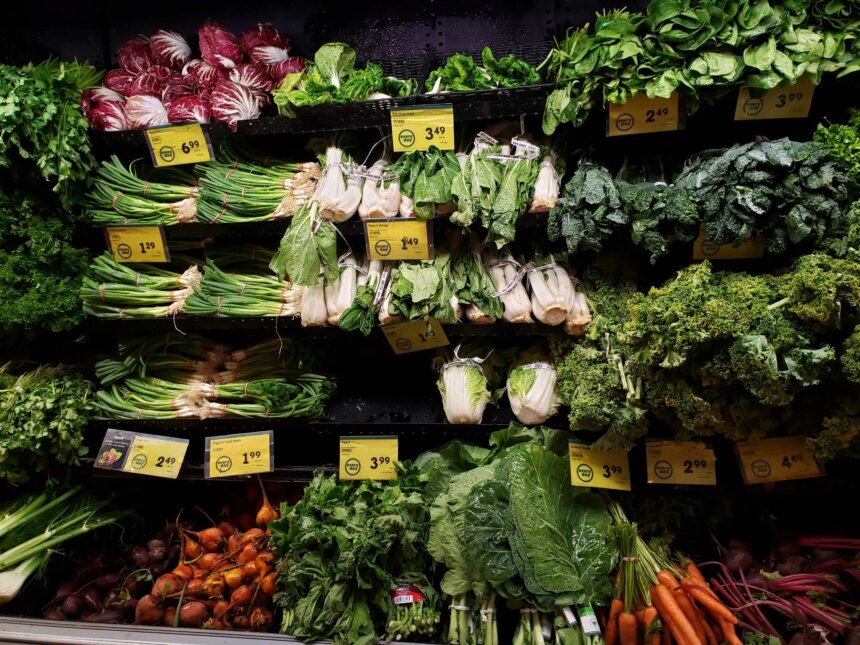The corner of 33rd Street and Avenue C North in Saskatoon’s Mayfair neighbourhood sits eerily quiet these days. Where the local Safeway once buzzed with shoppers, only empty parking spaces remain. For Diane Boyko, a 67-year-old resident who’s lived in the area for over three decades, the closure represents more than inconvenience.
“I don’t drive anymore,” Boyko explained, leaning on her walking cane during our conversation at a community meeting last week. “The nearest proper grocery store is now almost 30 minutes by bus, and carrying bags back is impossible some days with my arthritis.”
Boyko is one of approximately 15,000 Saskatoon residents now living in what urban planners call a food desert – neighbourhoods where nutritious, affordable food lies beyond reasonable walking distance. The problem has worsened dramatically since 2021, with major grocers shuttering four additional locations across the city’s core neighbourhoods.
Dr. Ryan Walker, Professor of Urban Planning at the University of Saskatchewan, has tracked this troubling pattern across multiple Canadian mid-sized cities. “What we’re witnessing in Saskatoon mirrors a national trend where commercial food retailers follow higher-income residential development to suburban areas,” Walker told me. “The economics of modern grocery operation increasingly favours large-format stores in newer neighbourhoods, leaving established communities behind.”
According to data from Statistics Canada, nearly 1.2 million Canadians now live in urban food deserts. The Canadian Urban Institute’s 2024 Food Access Report indicates that Saskatoon’s situation has become particularly acute, with 22% of core neighbourhood residents now living more than 1.5 kilometres from a full-service grocery outlet.
The health implications are substantial. A study published in the Canadian Medical Association Journal last year found that residents of food deserts showed markedly higher rates of diet-related health issues, including a 17% higher incidence of Type 2 diabetes compared to those with convenient grocery access.
“We’re already seeing the downstream effects in our community health centres,” notes Dr. Erin Thompson, Director of Population Health for the Saskatchewan Health Authority. “When people rely on convenience stores for nutrition, we see predictable increases in hypertension, obesity, and related conditions.”
The problem transcends mere inconvenience. When I visited the Prairie Convenience Store on 33rd Street – now the closest food retailer for many Mayfair residents – I found milk priced nearly 30% higher than at major grocers, with fresh produce limited to a small selection of aging bananas and apples.
Urban planning experts suggest that municipalities face a difficult balancing act between market forces and community needs. Mark Wilson, Saskatoon’s Director of Planning and Development, acknowledges the challenge.
“Traditional zoning approaches have separated residential from commercial uses for decades,” Wilson explained during a city council meeting I attended last month. “But that model assumed universal car ownership and stable retail environments – neither of which reflects today’s reality.”
The emerging solution, according to many experts, involves density – specifically, creating sufficient population concentration to support smaller-format grocers in established neighbourhoods.
“Food co-ops and neighbourhood markets can thrive with the right population base,” explains Janna Dutton, Executive Director of Food Secure Saskatchewan. “But they need roughly 5,000 households within walking distance to remain viable without significant subsidies.”
Saskatoon’s recent approval of a mixed-use development near the former Safeway site offers a glimpse of this approach. The project, which combines 210 residential units with ground-floor retail space specifically zoned for food retail, represents what Walker calls “the kind of integrated planning that addresses food access through density rather than subsidy.”
Similar initiatives have shown promise elsewhere. In Winnipeg’s West Broadway neighbourhood, a community-owned grocery store has thrived since 2020, supported by increased residential density through apartment infill development. In Halifax, a mandatory food retail requirement in developments exceeding certain size thresholds has preserved grocery access in several gentrifying neighbourhoods.
But such approaches face resistance. At a recent Saskatoon planning commission meeting I attended, several property owners expressed concerns about density increases. “We bought in Mayfair for the character homes and quiet streets,” argued resident Thomas Harris. “If we wanted to live next to apartment buildings, we’d have bought downtown.”
The tension reflects a broader Canadian challenge: reconciling neighbourhood character with essential services like food access. Political will remains a crucial factor.
“Municipal governments have the tools to address food deserts through creative zoning, density bonuses, and development requirements,” notes Dr. Pamela Shaw, Director of Urban Studies at Vancouver Island University. “What’s often lacking is the political courage to make difficult choices between preserving neighbourhood aesthetics and ensuring essential services.”
For Saskatoon city councillor Hilary Gough, whose ward includes several affected neighbourhoods, the issue transcends traditional political divisions.
“This isn’t about progressive versus conservative approaches,” Gough told me during an interview at City Hall. “It’s about recognizing that basic nutrition access is fundamental infrastructure, like water or transit. We wouldn’t accept neighbourhoods without those services, yet somehow we’ve normalized food deserts.”
As communities across Canada grapple with similar challenges, the Saskatoon experience offers both warning and potential pathways forward. The solution likely requires both market-based approaches – increasing density to support viable food retailers – and policy interventions like zoning requirements or cooperative models.
Meanwhile, for residents like Diane Boyko, the theoretical discussions have immediate consequences. “Politicians and planners talk about long-term solutions,” she says, “but I need to eat properly today, not five years from now when some new development might bring a store back.”
As our cities continue evolving, bridging that gap between immediate needs and sustainable solutions may prove the most significant challenge of all.






